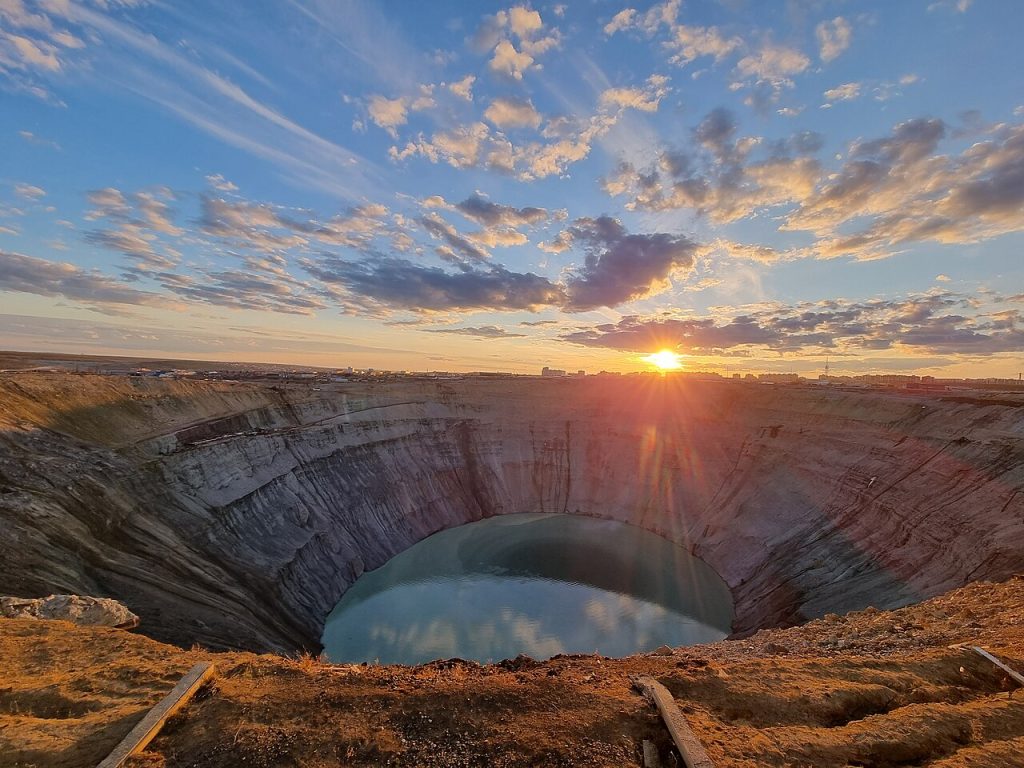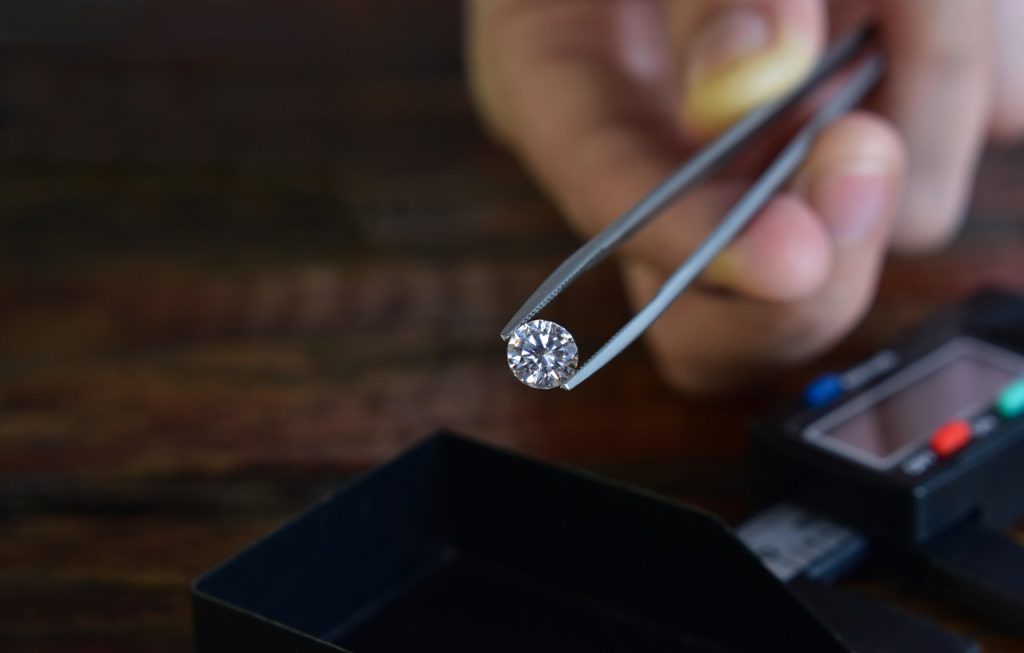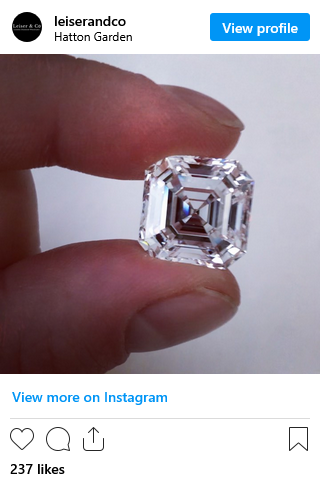The Formation of Diamonds Deep Within the Earth
Diamonds are among the most fascinating natural creations, formed billions of years ago under extreme conditions deep within the Earth’s mantle. At depths of around 150 to 200 kilometers beneath the Earth’s surface, immense pressure and temperatures exceeding 1,000 degrees Celsius transform pure carbon atoms into crystalline structures. This process can take anywhere between one billion and three billion years, making each diamond a geological time capsule. Unlike other gemstones that form in surface conditions, diamonds require volcanic activity to bring them closer to the Earth’s crust. Kimberlite and lamproite volcanic pipes are the primary carriers that transport diamonds during eruptions. These eruptions are rare, violent, and geologically significant, as they provide the only natural pathway for diamonds to reach minable depths. Understanding this natural formation is crucial, as it underpins the rarity and enduring value associated with diamonds in the global market.

Diamond Mining: From Exploration to Extraction
The journey of a diamond continues with mining, which is a complex and resource-intensive process. Exploration teams first identify potential diamond-rich areas using advanced geological surveys, satellite imagery, and sampling techniques. Once a deposit is located, mining companies determine whether to use open-pit, underground, or alluvial mining methods. Open-pit and underground mining are common in kimberlite-rich areas, while alluvial mining extracts diamonds from riverbeds where erosion has carried them away from primary deposits. Mining involves moving vast amounts of earth, sometimes hundreds of tons of ore, to recover a handful of diamonds. Environmental and ethical concerns are also tied to this stage, as mining impacts ecosystems and communities. To address this, modern mining companies increasingly focus on sustainability, land rehabilitation, and fair labor practices. Nonetheless, mining remains one of the most challenging and debated steps in the diamond journey, as it requires balancing economic gain with environmental and social responsibility.
Sorting and Processing: The First Step Toward Refinement
After diamonds are mined, they are transported to sorting facilities where they are carefully separated from ore and gravel. The initial step usually involves crushing ore and using x-ray fluorescence or grease tables to detect and isolate rough diamonds based on their unique physical properties, such as their ability to fluoresce under certain conditions. Once recovered, diamonds are categorized according to size, shape, clarity, and color. Industrial-grade diamonds, which are less visually appealing, are often diverted for use in cutting, grinding, and drilling tools, while gem-quality stones proceed to further stages of refinement. This sorting process is meticulous and often performed under strict security to ensure that no stones are lost or stolen. Large diamond producers like De Beers or Alrosa maintain centralized sorting houses where diamonds are valued and prepared for global distribution. Sorting not only separates gem-quality diamonds but also begins the economic valuation that influences their eventual market price.
The Art of Cutting and Polishing
Once sorted, gem-quality diamonds enter the cutting and polishing phase, often considered the most artistic stage of their journey. This process transforms rough stones into dazzling gems suitable for jewelry. Expert diamond cutters assess each rough diamond’s unique structure, inclusions, and potential flaws using computer modeling and laser technology to determine the most efficient way to maximize brilliance and minimize waste. The first step, known as cleaving or sawing, divides the rough stone into workable pieces. Next, bruting shapes the diamond into a basic round form, after which faceting begins. This stage involves cutting precise angles and facets to reflect light optimally, enhancing brilliance and fire. Finally, polishing brings out the diamond’s characteristic sparkle. The level of craftsmanship in this phase directly influences the diamond’s beauty and value, which is why renowned diamond-cutting centers in Antwerp, Surat, and New York are globally respected for their expertise.
Certification and Grading Standards
Before diamonds reach the consumer market, they undergo grading and certification by recognized gemological laboratories. The most respected institutions, such as the Gemological Institute of America (GIA), the International Gemological Institute (IGI), and the Hoge Raad voor Diamant (HRD), evaluate diamonds using the universally accepted “Four Cs”: cut, color, clarity, and carat weight. Each of these attributes plays a vital role in determining value. For instance, a flawless, colorless diamond with an excellent cut may command a far higher price than a larger diamond with visible inclusions or lower color grade. Certification ensures transparency, giving consumers confidence that the diamond they purchase has been objectively assessed. In addition, certificates often include laser inscriptions and detailed reports, making each diamond traceable and verifiable. The grading stage is crucial not only for valuation but also for maintaining trust and integrity in the diamond market, where authenticity and accuracy are paramount.

Global Distribution and Diamond Trading Hubs
Once diamonds are certified, they enter the global trade network, which is organized around a few major trading hubs. Antwerp in Belgium has historically been regarded as the diamond capital of the world, hosting hundreds of traders, brokers, and dealers. Other prominent hubs include Dubai, Mumbai, Tel Aviv, and New York, each specializing in different aspects of the diamond trade, from wholesale markets to luxury retail. In these centers, diamonds are bought and sold through both private transactions and organized exchanges. Auctions also play a role, especially for rare and exceptional stones, attracting collectors and luxury brands worldwide. The distribution process is tightly regulated, with security and authenticity checks at every stage to prevent fraud and smuggling. The Kimberley Process Certification Scheme, established in the early 2000s, was specifically designed to prevent “conflict diamonds” from entering the legitimate trade. This global framework ensures that the majority of diamonds reaching consumers today are sourced responsibly and ethically.
The Role of Jewelry Manufacturers and Designers
After being traded, diamonds make their way into the hands of jewelry manufacturers and designers, who craft them into finished products. This stage involves selecting settings, combining diamonds with precious metals, and designing pieces that align with consumer trends and cultural preferences. Jewelry houses and luxury brands often rely on skilled artisans who specialize in different techniques, from traditional handcrafting to modern 3D printing and computer-aided design. The style in which a diamond is set significantly influences its visual appeal and market price, with popular settings like solitaire, halo, and pavé enhancing the gemstone’s brilliance. Designers also play an essential role in storytelling, as they often link diamonds to concepts of love, commitment, or heritage, adding emotional value to the physical stone. At this point, the diamond begins its transformation from a raw geological marvel into a highly coveted symbol of luxury and status, ready to meet the consumer market.
Retail: Where Diamonds Meet Consumers
The retail sector represents the final commercial step in the diamond’s journey. Diamonds are displayed in luxury boutiques, high-street jewelry stores, and increasingly through online platforms. Retailers play a critical role in educating consumers about diamond quality, certification, and pricing, often providing guidance on the Four Cs. While traditional brick-and-mortar stores offer the advantage of in-person viewing and customer service, online sales have surged due to convenience, broader selection, and competitive pricing. Many retailers also offer custom-made jewelry options, allowing customers to select individual diamonds and pair them with settings of their choice. Marketing strategies at this stage heavily influence consumer perceptions, with campaigns emphasizing romance, longevity, and investment value. Retailers must balance transparency, competitive pricing, and brand reputation to succeed in a highly competitive industry. For many buyers, this stage marks the culmination of a diamond’s extraordinary journey, as it becomes a treasured possession or a meaningful gift.
Ethical and Environmental Considerations in the Diamond Industry
Modern consumers increasingly demand transparency about the origins and sustainability of the products they purchase, and diamonds are no exception. Ethical concerns, particularly regarding conflict diamonds and mining practices, have shaped global regulations and industry standards. Beyond the Kimberley Process, many companies now emphasize traceability through blockchain technology, which allows customers to track a diamond from mine to market. Sustainability initiatives also focus on reducing the environmental footprint of mining operations, rehabilitating land, and supporting local communities. Additionally, the rise of lab-grown diamonds provides an alternative to mined stones, appealing to consumers who prioritize ethical sourcing and affordability. While lab-grown diamonds share the same chemical and physical properties as natural diamonds, their market journey differs, as they bypass mining and are instead created in laboratories using high-pressure, high-temperature (HPHT) or chemical vapor deposition (CVD) methods. This shift reflects how ethics and sustainability are becoming central considerations in the diamond market.
Conclusion: The Long and Complex Journey of a Diamond
The path from deep Earth formation to a sparkling ring in a jewelry store is long, intricate, and multifaceted. Each stage—formation, mining, sorting, cutting, certification, trading, jewelry design, and retail—adds value, expertise, and significance to the diamond. Alongside this journey, broader issues such as ethical sourcing, environmental impact, and technological innovation have become increasingly important. Understanding this journey not only enhances appreciation of a diamond’s beauty but also highlights the enormous global industry supporting it. From billion-year-old geological processes to modern sustainability practices, diamonds embody both natural wonder and human ingenuity, making them enduring symbols of rarity, craftsmanship, and cultural value.




